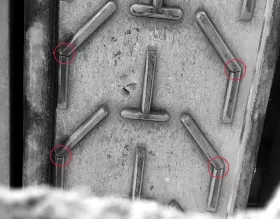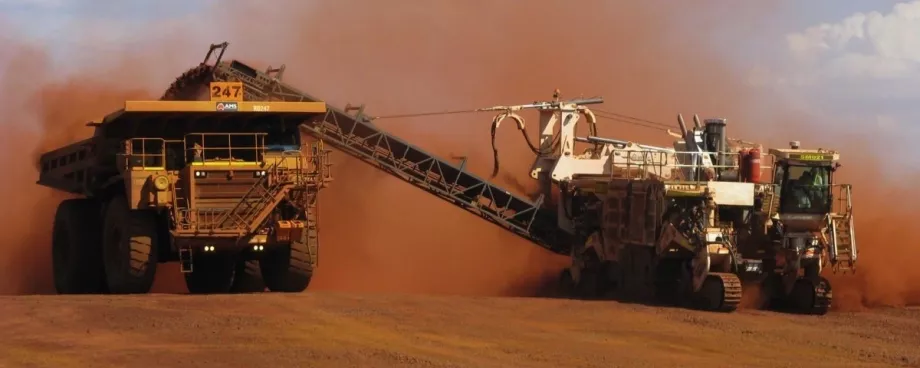Getting to Grips
Excluding belts that have cleats fitted to them, there are essentially two types of profiled rubber conveyor belt. The most commonly used are those with chevron-patterned profiles ranging from 15mm up to 32mm in height above the belt surface. The chevrons guide and control the flow of loose materials such as sand or small size aggregates for example. The second most common type are belts with low profiles that are usually no more than 5mm.

One of the most common problems experienced by many operators affects high chevron belting because the chevron profiles can become partly detached or ripped off entirely.
With both high and low profile belts another common problem is that the profiles themselves wear down within an unacceptably short period of time. The origins of these problems can both be found within the manufacturing processes and the rubber compounds that are used.
Conventionally produced Chevron Belting – The Achilles Heel
Because of its adaptability, most of the rubber used to make modern-day conveyor belting is synthetic. Because of the technical difficulties (and higher cost) involved in creating a synthetic rubber compound that will flow uniformly, the vast majority of chevron profile belts are effectively created using a two-stage vulcanisation process. Firstly, a belt carcass consisting of layers of fabric reinforcing ply and covered by a layer of uncured rubber compound on the top and bottom surfaces is placed in a vulcanisation press. At the same time, a mould plate is filled with uncured rubber and the base structure is then placed on top of the filled mould. Alternatively, the mould plate is extracted, filled with uncured rubber and then replaced back under the base structure. In both cases, the complete structure is then vulcanised to create the finished belt.
The key issue here is that the uncured rubber compound used to construct the base belt structure has to be different from the compound used to fill the moulds. This is because the rubber used in the moulds to create the chevron profiles has to be more malleable than the rubber used on the top and bottom covers so that it can completely fill the mould cavity.
However, this directly creates the ‘Achilles heel’ of all chevron belts made in this way. This is because the contact point where the two different rubber compounds join then becomes a point of weakness. The chevron profiles constantly stretch and flex under tension each time they run around a pulley or drum. Unless the bond between the base belt carcass and the chevron profile is absolutely flawless then sooner or later dynamic stress fractures will start to occur, causing the profile to split. Especially on belts conveying hard, heavy lumps of material, the constant impact weakens the joint between the base belt and the chevron. Either way, eventually the chevron will part company with the rest of the belt.
The problem is significantly magnified on conveyors with relatively small pulley diameters, especially mobile equipment. The smaller the pulley then the higher the dynamic stress. Failure will happen even sooner if one (or both) of the rubber compounds used are not fully resistant (as per ISO 1431 testing) to the effects of degradation (surface cracking) created by chemical reactions in the rubber caused by ground level ozone and ultra violet light.







